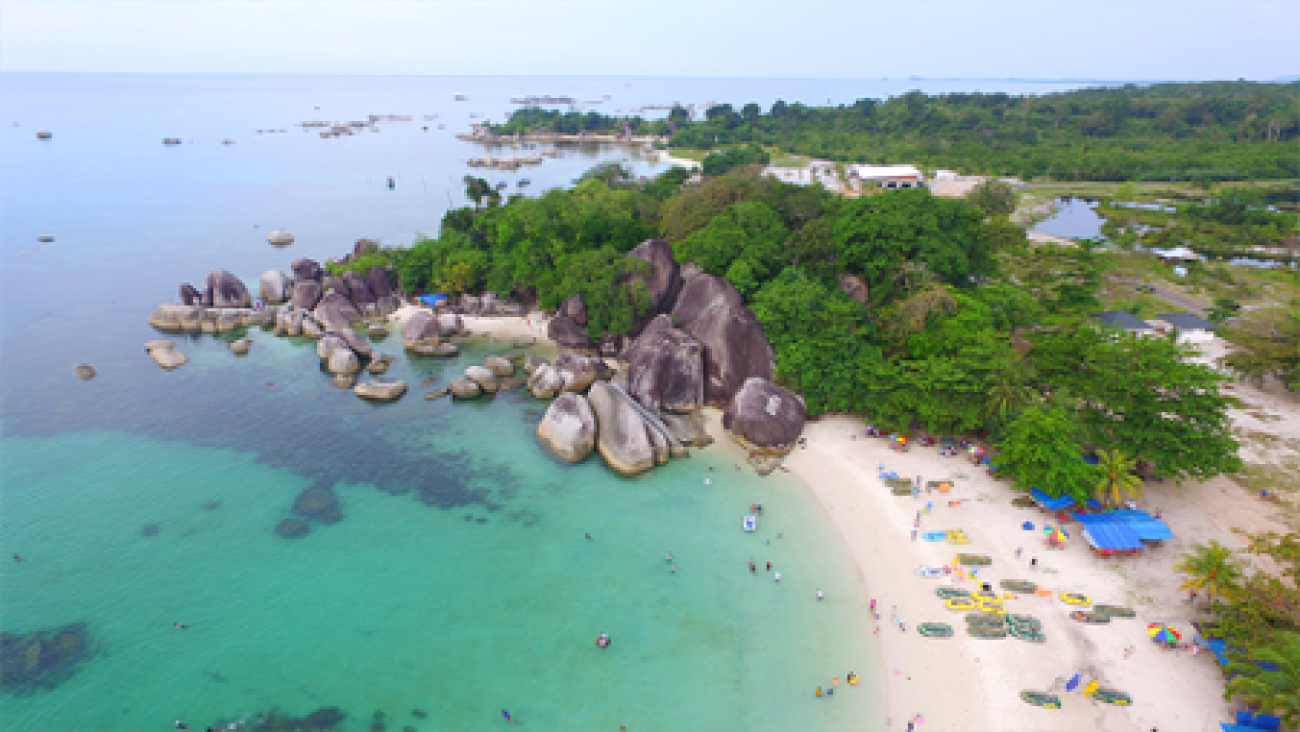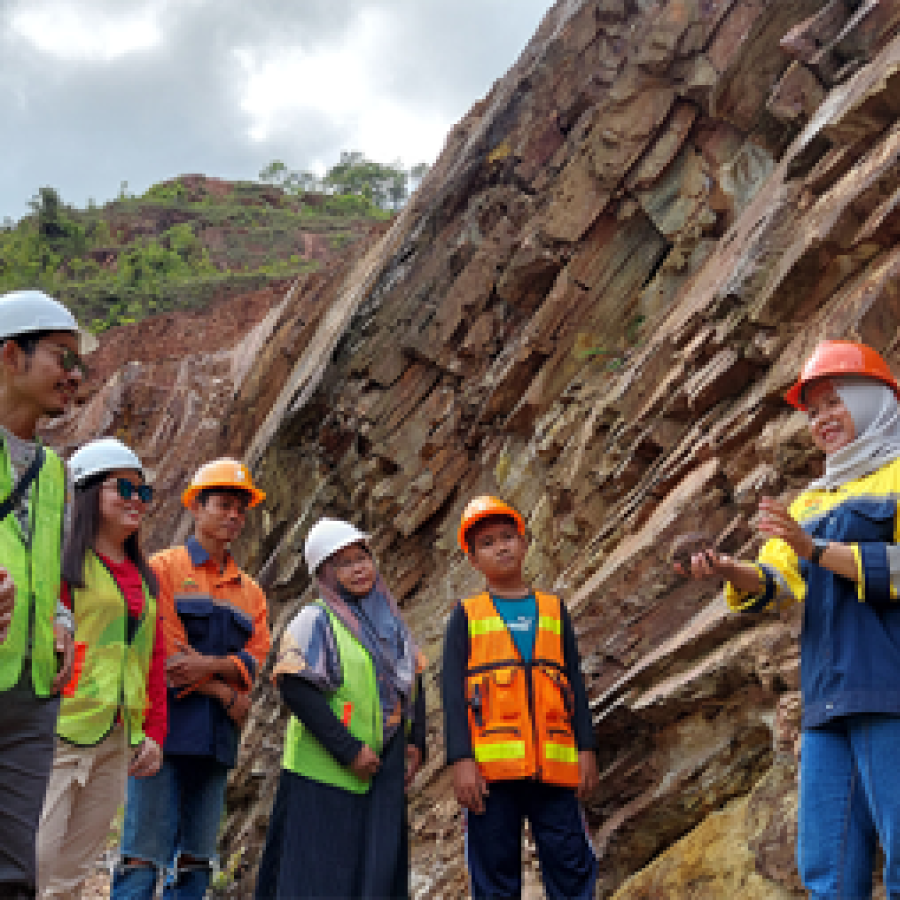Introducing Belitong Island: Indonesia’s Newest UNESCO Global Geopark

The world currently recognizes the 17 tourist sites because of their uniqueness in terms of geology, biology, and culture
In 1860, a group of Dutch investors gathered at a hotel in The Hague to discuss a near century-long tin mining concession in what was then the colonial Dutch East Indies. The enterprise they set up to extract the ore, NV Billiton Maatschappij, would eventually evolve into BHP-Billiton, the world’s second largest mining company.
For centuries, the Indonesian island that inspired Billiton’s name had been known principally for its deposits of cassiterite, the mineral mined for tin. But today Belitong’s unique geology is attracting international interest of a different kind. On April 21, the United Nations Education, Scientific and Cultural Organization (UNESCO) announced eight new Global Geoparks. Among them: Belitong (also spelled Belitung), and more than 200 small islands in a vast marine area surrounding it.
“The world currently recognizes the 17 tourist sites because of their uniqueness in terms of geology, biology, and culture,” Bangka-Belitong Islands Governor Erzaldi Rosman Djohan told local media recently, “Hopefully, (the UNESCO recognition) will increase the number of tourist arrivals in the province.”
Prominent among those tourist attractions are Belitong’s spectacular Tor granite landscapes—rolling landforms dotted with free-standing rock outcrops created by millennia of erosion and weathering. The island’s geology also includes rare tektites, which were formed as a result of meteorite impacts. The Geopark is home to over 288,000 people of diverse cultures including the Sawang Tribe, as well as endemic plant and animal species like the Tarsier Belitong.
“Belitong is a significant addition to Indonesia’s growing number of UNESCO Global Geoparks,” says Dr. Hans Thulstrup, the senior program officer at UNESCO’s office in Jakarta.
The area’s unique Tor granite landforms, remnants of meteorite impacts, mining heritage and diverse local culture make it a site of significant tourism potential. But, at the same time, its complex ecology requires careful, integrated management to ensure long-term sustainability, says Thulstrup: “The UNESCO Global Geopark designation will make a significant contribute towards this goal.”

Belitong’s new status comes at a critical moment for global ecosystem conservation. During nationwide COVID-19 lockdowns, the quieting of human activity in cities lent weight to the popular refrain that “nature is healing.” Widely shared images appeared to show wildlife bouncing back in urban spaces: kangaroos bounded through central Adelaide; buffaloes wandered empty Delhi highways; and dolphins capered in Turkish shipping lanes. But in many of the world’s poorest regions, something different was happening: biodiversity loss was accelerating, the New Scientist reported earlier this year. The pandemic has put vital conservation initiatives on hold; meanwhile economic pressure has led to surges in deforestation and poaching in some areas.
Indonesia has taken important steps towards a more sustainable future. The rate of primary forest loss in the country fell for the fourth year in a row in in 2020, according to the World Resources Institute. In fact, last year Indonesia dropped out of the top three countries for primary forest loss, in part due to better fire monitoring and prevention, and agrarian and social forestry reforms that have encouraged more sustainable land use.
But at Indonesia still ranks fourth globally for primary forest loss. And recent studies suggest that even as the national rate of loss is decreasing, forestry loss in some biodiversity hotspots—like Papua—is actually accelerating as agribusinesses move east
Protecting biodiversity is vital for human health as well as the health of our plant. The World Health Organization has linked biodiversity loss to an increased risk of new zoonotic diseases that pass from animals to humans, like COVID-19.
Belitong will be Indonesia’s sixth UNESCO Global Geopark, defined by the cultural organization as “unified areas with a geological heritage of international significance.” Other Indonesian sites to have received that designation include Mount Batur in Bali, and Mount Rinjani in West Nusa Tenggara.
But the unique geological heritage that attracted European miners to Belitong in the early 19th century has been both a blessing and a curse. Belitong and larger sister island Bangka supply some 90% of the tin in Indonesia, the world’s second largest exporter of the metal. Mining for the metal, which is used in conductors and smart phones, is a critical contributor to the local economy, but it has also scarred the land, ravaged beaches, and decimated mangroves. And the cassiterite has often been extracted by artisanal miners working in dangerous conditions.
UNESCO’s Global Geopark status is designed to protect Belitung unique geology and culture, boost green tourism and encourage environmental best practices. Indonesia’s government has pledged to use the designation to bolster the traditional economy of local peoples at a sustainable level.
That commitment is vital if Indonesia is to continue developing sustainably. It also ties into a global imperative. On June 5, the United Nations will officially launch its decade of ecological restoration, an initiative to prevent, halt and reverse the degradation of every ecosystem on the planet. Achieving that can help end poverty, combat climate change, and prevent mass extinction—but it’s only possible if everyone does their part. Belitong is a case in point, says Valerie Julliand, the United Nations Resident Coordinator for Indonesia.
“We need to look at the planet and the living creatures on it not as a source to exploit, but as a treasure to protect,” Julliand says, “by doing so, we protect ourselves.”

















